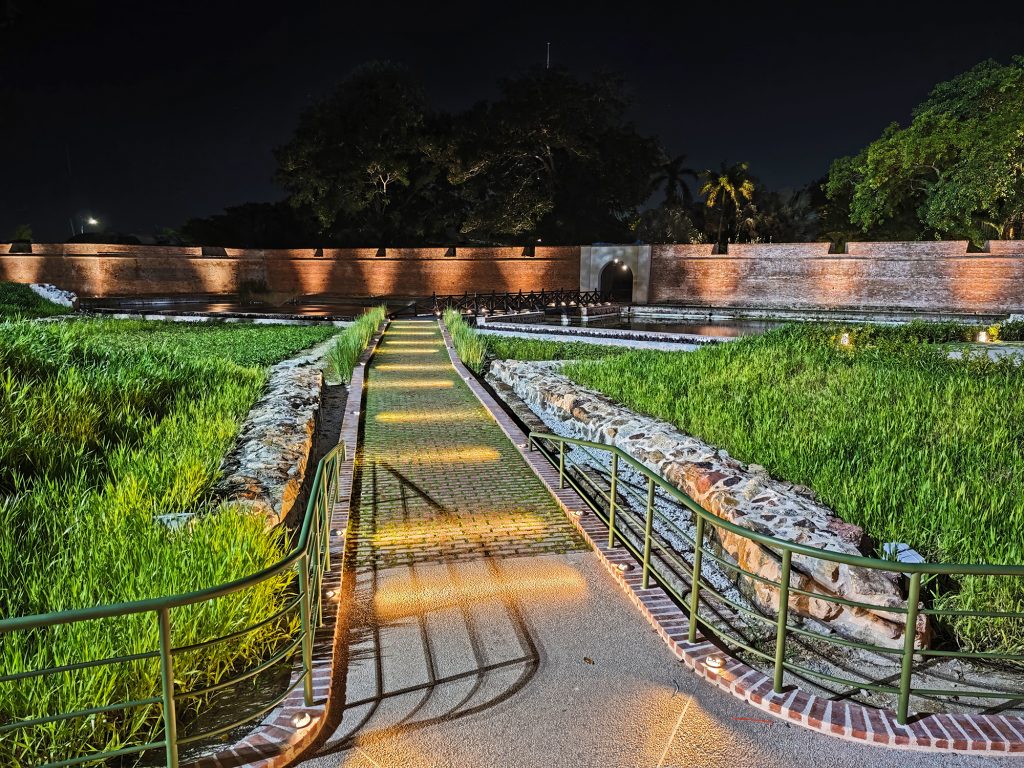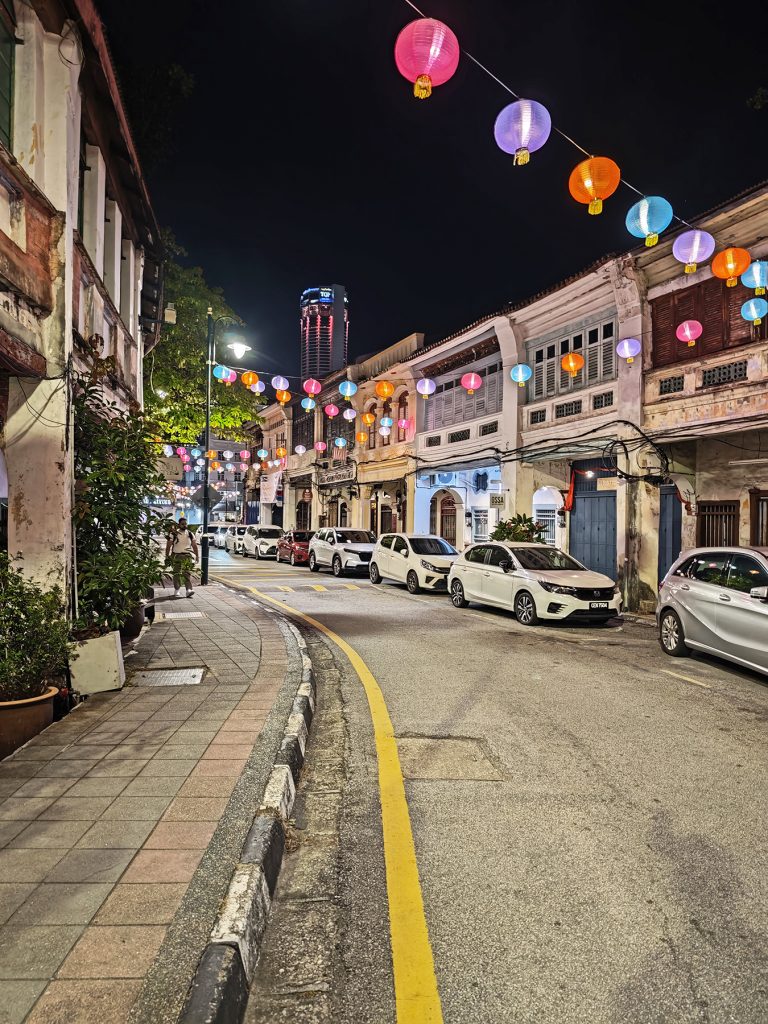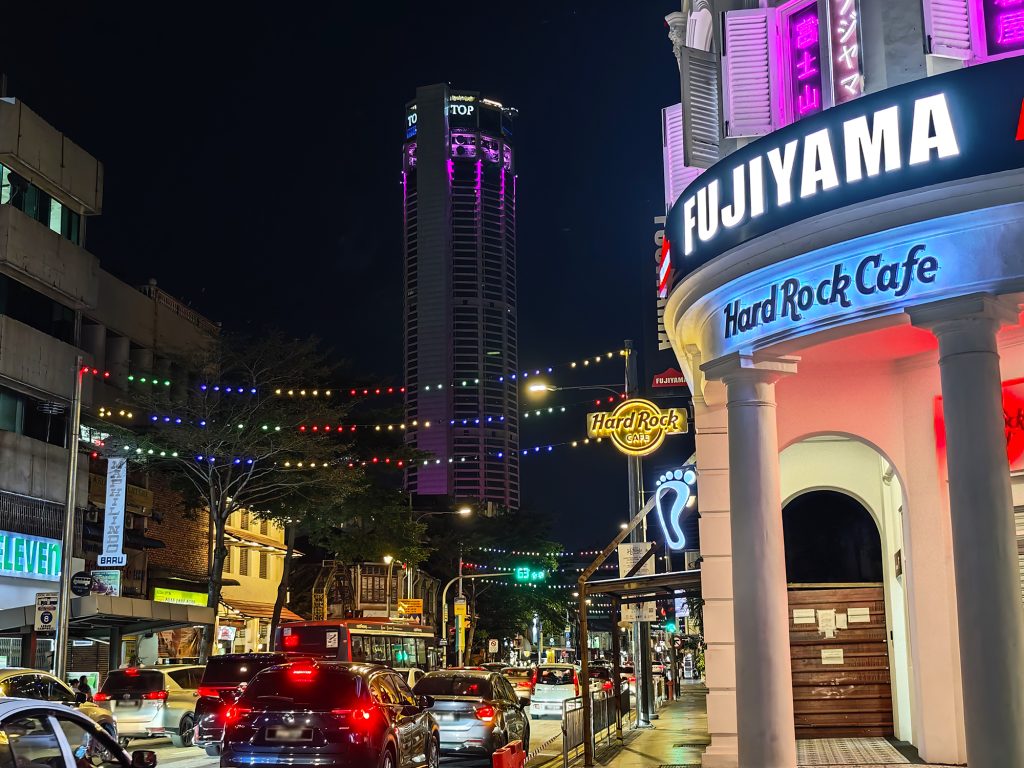
The newly restored western moat at Fort Cornwallis in George Town is set to reopen with an upgraded walkway and improved drainage, reviving a historical feature that once protected the 18th-century fort from invasions.

The newly restored western moat at Fort Cornwallis in George Town is set to reopen with an upgraded walkway and improved drainage, reviving a historical feature that once protected the 18th-century fort from invasions.

Despite its name, Armenian Street (Lebuh Armenian) was not originally settled by Armenians. It was named after the small Armenian community that once lived there in the early 1800s, who were influential traders and philanthropists in Penang. Interestingly, the famous Eastern & Oriental Hotel was founded by the Armenian Sarkies Brothers, who also established Singapore’s Raffles Hotel.
Today, the street is a UNESCO heritage hotspot known for its murals, cafes, and historic shophouses.
Queensbay Mall is celebrating Deepavali 2025 with its “Radiance of Lights” theme, transforming the central atrium into a vibrant tribute to the Konark Sun Temple. The space is beautifully decorated with glowing elephants, golden lotus flowers, and garden-inspired displays, creating a warm festive atmosphere. Visitors can also enjoy cultural performances like Odissi dance and Silambam, along with family activities such as rangoli contests and card-making workshops; making the festival a perfect blend of shopping, tradition, and celebration.
A trishaw in Penang, locally called “beca,” is a traditional three-wheeled bicycle taxi mainly used by tourists to explore George Town and Penang’s heritage sites. The trishaw ride is a popular and relaxing way to see local street art, temples, mosques, and historic buildings around the UNESCO World Heritage Site area. Typically, rides cost around RM 40 to RM 50 per hour, with drivers often serving both as guides sharing local history and navigating the narrow and busy streets safely.
Trishaws hold historical importance since the 1930s and remain a cultural symbol despite the decline in daily local use, mostly catering now to visitors who want an authentic and leisurely tour experience around Penang’s charming spots.
The Fort Cornwallis moat in Penang has undergone a major restoration set to be fully completed and opened to the public by July 2025, featuring the reinstatement of its southern and western sections to form a 4,000 square meter water basin about 0.9 meters deep, holding approximately 3,600 cubic meters of water. Using traditional building methods for long-term stability, the restoration includes ecological enhancements like a mechanical sand filter and a vegetated bio-retention swale, aligning with sustainable development goals. The project, costing around RM23.4 million and supported by the Penang state government, Think City, and Hasanah Foundation, also includes landscaping improvements, new visitor amenities, and a rebuilt food court adjacent to the moat, designed to complement the historic site.
This restoration revives the fort’s original defensive features from its 1804 construction, enhancing heritage conservation and turning the moat area into an attractive green public space and educational site for both locals and tourists, particularly timed to coincide with the George Town UNESCO World Heritage celebrations.
Originally constructed by the British East India Company in 1804 as a defensive measure during the Napoleonic Wars, the moat was filled in 1921 due to public health concerns (malaria) and construction developments.




Once Coffee cafe located at Jalan Datuk Koyah, The Sugar Tang place at Carnarvon Street, Yap Kongsi Temple at Armenian Street and a liquor store at Campbell Street.

Penang Road (Jalan Penang) is one of George Town’s oldest and liveliest streets, connecting colonial-era landmarks with modern spots like Komtar and Chowrasta Market. Known for its mix of heritage, street food, and nightlife—especially around Upper Penang Road—it remains a key hub for both locals and tourists.

Khoo Kongsi, officially known as Leong San Tong Khoo Kongsi, is the grandest Hokkien clanhouse in Malaysia and one of George Town’s most iconic heritage sites. Located at Cannon Square amidst a network of old shophouses, it was rebuilt in 1906 after a fire destroyed the original structure—featuring a magnificent ancestral hall, operatic stage, administrative blocks, and rows of terrace houses forming a tightly-knit clan complex . The main hall, Leong San Tong (Dragon Mountain Hall), showcases exquisite Southern Fujian craftsmanship—with detailed stone carvings, ornate wooden beams, gilded decorations, and a rich visual tapestry of murals and ancestral tablets. The site also houses a small museum tracing the Khoo family’s migration from Fujian, clan governance, and community influence in Penang’s development.
The 17th annual George Town Heritage Celebrations—themed “Doors and Doorways”—ran from 5–7 July 2025, inviting visitors to step into Penang’s hidden past. The event featured immersive storytelling, artisan workshops (from pottery to traditional snacks), heritage-themed performances, and behind-the-scenes access to eight historic Category 1 heritage buildings. Designed to celebrate George Town’s living traditions, the celebration focuses on cultural connections, community engagement, and heritage education. The event is located at the areas around Armenian Street this year.